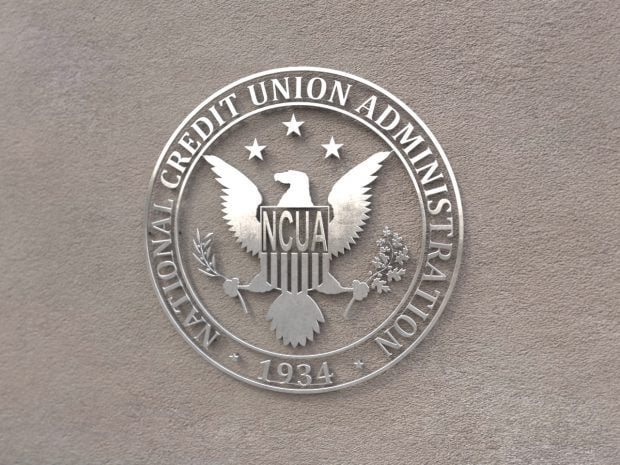oCredit union becomes first financial institution in the U.S. to issue chip and PIN.
oCU said member demand and fraud protection drove the move.
oChip and PIN card vendors consider technology inevitable.
Recommended For You
The $3.1 billion United Nations Federal Credit Union has become the first financial institution in the United States to issue chip and PIN credit cards.
Chip and PIN technology, also called EMV technology in Europe, uses an imbedded microchip in the card as well as a personal identification number to validate transactions instead of a signature. The system used in the United States relies on a magnetic stripe to hold card data that is used to make the transaction.
The chip and PIN system has lowered the incidence of card fraud at the point of sale in the countries where it has been implemented, but critics have pointed out it has led to an increase in Internet or other "card not present" fraud.
Merrill Halpern, the card services manager for UNFCU, explained that the credit union had been contemplating starting to issue the cards for a while, both to better serve its international membership and to limit the CU's exposure to card fraud. Halpern would not share specific numbers to illustrate the credit union's card fraud but noted that it was significantly higher than for other financial institutions, including banks.
Part of the reason for the higher than average fraud incidence is that other credit unions with primarily U.S.-based memberships can, for example, automatically decline card transactions from some overseas countries perceived to have a high risk of card fraud to protect themselves from losses. But with its 88,000 members spread across 205 countries, Halpern pointed out that option is less feasible for UNFCU. Further, its members had started to complain about the lack of the chip and PIN cards, particularly when traveling on U.N. or other business.
UNFCU's fields of membership include employees of the United Nations as well as its related international agencies.
"I have a stack of e-mail from members asking us to go ahead and start making these cards available," Halpern said. "They are very popular."
Their popularity stems, in part, from a change in payment systems overseas. More and more merchants and other institutions, particularly in Europe, have moved from point of sale terminals that accept magnetic stripe cards to those outfitted to accept chip and PIN transactions. This has resulted in UNFCU members drawing attention to themselves, often when they least want to, in order to do basic things like buy newspapers at a newsstand or make purchases at pharmacies.
"Imagine you are standing in a long line of people waiting to make your purchase in a foreign city or country and instead of being able to do it easily and go, now you have to step aside or hold up the line while they make a special arrangement so you can use your magnetic stripe only card to make the transaction," Halpern explained. "It wasn't working."
Halpern said the new UNFCU cards will have both the technology necessary for chip and PIN transactions as well as magnetic stripes so members can still use them easily at those terminals.
Halpern said the credit union is confident that its members will welcome the card change but that the CU will roll out the change in stages, starting with the members who travel overseas the most and have the credit union's Platinum Access card. Assuming there are no hang-ups or glitches, UNFCU plans to distribute the cards across the rest of its more than 30,000 card accounts.
For Gemalto, the European-based digital security firm that UNFCU has chosen as its card vender, UNFCU's move represents the latest step in what it sees as an inevitable march from magnetic stripe cards to chip and PIN in the U.S.
"Cardholders naturally expect to be able to use their payment card anywhere in the world," said Jack Jania, vice president and general manager for Gemalto North America. "By partnering with Gemalto, UNFCU leveraged Gemalto's ability to work with payment institutions around the planet to quickly achieve worldwide compatibility. This ensures the microprocessor payment card issued to their members is globally accepted, keeping their payment card top of wallet and making it the most convenient to use both when traveling and when at home."
Jania contests the notion that chip and PIN cards are necessarily more expensive to issue than other existing card technologies. For example, Jania pointed out that chip and PIN cards are not more expensive to issue that the PayPass or other wireless technology cards that institutions, including some credit unions, have issued in order to pick up business from convenience stores and other merchants that put a premium on transaction speed.
Instead, Jania attributed the reluctance to pick up the chip and PIN technology on a calculation among large U.S. issuers to accept the cost of fraud rather than invest in the new technology. This is a calculation, Jania estimated, that fewer card issuers will be willing to make as capitalization and margins continue to fall.
Both Halpern and Jania agreed that member use and member convenience would help drive the acceptance of chip and PIN, particularly when other card issuers begin to figure out how much of their cardholders' travel spending they are losing because their cards don't fit the merchant terminals that are coming into use around the globe.
"The individual transactions can seem small," said Halpern about the money spent overseas, "but they mount up quickly so the cards are good for us and for our members."
© 2025 ALM Global, LLC, All Rights Reserved. Request academic re-use from www.copyright.com. All other uses, submit a request to [email protected]. For more information visit Asset & Logo Licensing.







